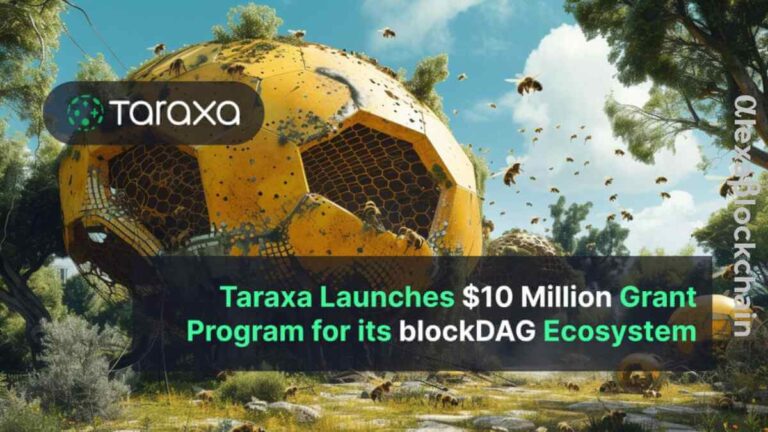The Taraxa Protocol Foundation has launched a $10 million Grant Program aimed at propelling the growth of its EVM-compatible blockDAG Layer-1 ecosystem. This initiative comes on the heels of a successful on-chain governance vote, highlighting the community’s strong support for the foundation’s strategic direction.
Founded by a duo of Stanford engineers in 2018, Taraxa has positioned itself at the forefront of blockchain technology with its pioneering t-Graph consensus mechanism and blockDAG architecture. Since the launch of its mainnet in 2023, Taraxa has been hailed as a revolutionary step in the evolution of decentralized networks, offering a host of technical innovations that distinguish it from its predecessors.
The Taraxa Grant Program is uniquely inclusive, inviting individuals, teams, and organizations of all types to contribute to the technical development of the ecosystem. With an emphasis on driving usage and growth, the program sets itself apart by allocating funds based on the achievement of quantifiable milestones, ensuring that contributions have a tangible impact on the platform’s expansion.
Developers are drawn to Taraxa for several compelling reasons. Firstly, its blockDAG architecture represents a significant advancement over traditional blockchain, offering unparalleled throughput and low latency without compromising on security or decentralization. This is achieved through the parallel processing of blocks, a stark contrast to the sequential block processing on conventional blockchain networks.
Moreover, Taraxa’s true EVM compatibility means that developers can seamlessly migrate dApps developed for Ethereum to Taraxa without the need to learn new programming languages or adapt to different frameworks. This ease of transition, coupled with Taraxa’s impressive performance metrics — including peak throughputs of 5,000 transactions per second and sub-second block times — makes it an attractive platform for developers seeking fast, cost-effective, and reliable decentralized solutions.
Notably, Taraxa also introduces mechanisms for preventing front-running, a common concern in decentralized finance (DeFi) transactions, thereby ensuring fair and secure trading environments. The platform’s commitment to true finality and its supportive community further enhance its appeal to developers looking for a stable and engaging development ecosystem.
The impending launch of the Ficus Root Bridge in mid-2024 promises to further bolster Taraxa’s position in the blockchain landscape. By facilitating seamless asset and liquidity flows between Ethereum and Taraxa, the bridge is set to enhance the ecosystem’s utility, asset diversity, and cross-chain liquidity, positioning Taraxa as a compelling Layer-2 solution for dApps and a viable consensus layer for rollups.
As the Taraxa Protocol Foundation opens its doors to grant applications, it invites developers to leverage its innovative platform to address real-world problems through decentralization. This grant program not only signifies Taraxa’s dedication to nurturing a vibrant ecosystem but also marks a significant milestone in the ongoing evolution of decentralized networks, promising to unlock new possibilities for developers and users alike.
Read Also: Bitget and Core DAO Unveil $200M Fund For Early-stage DApp Projects



